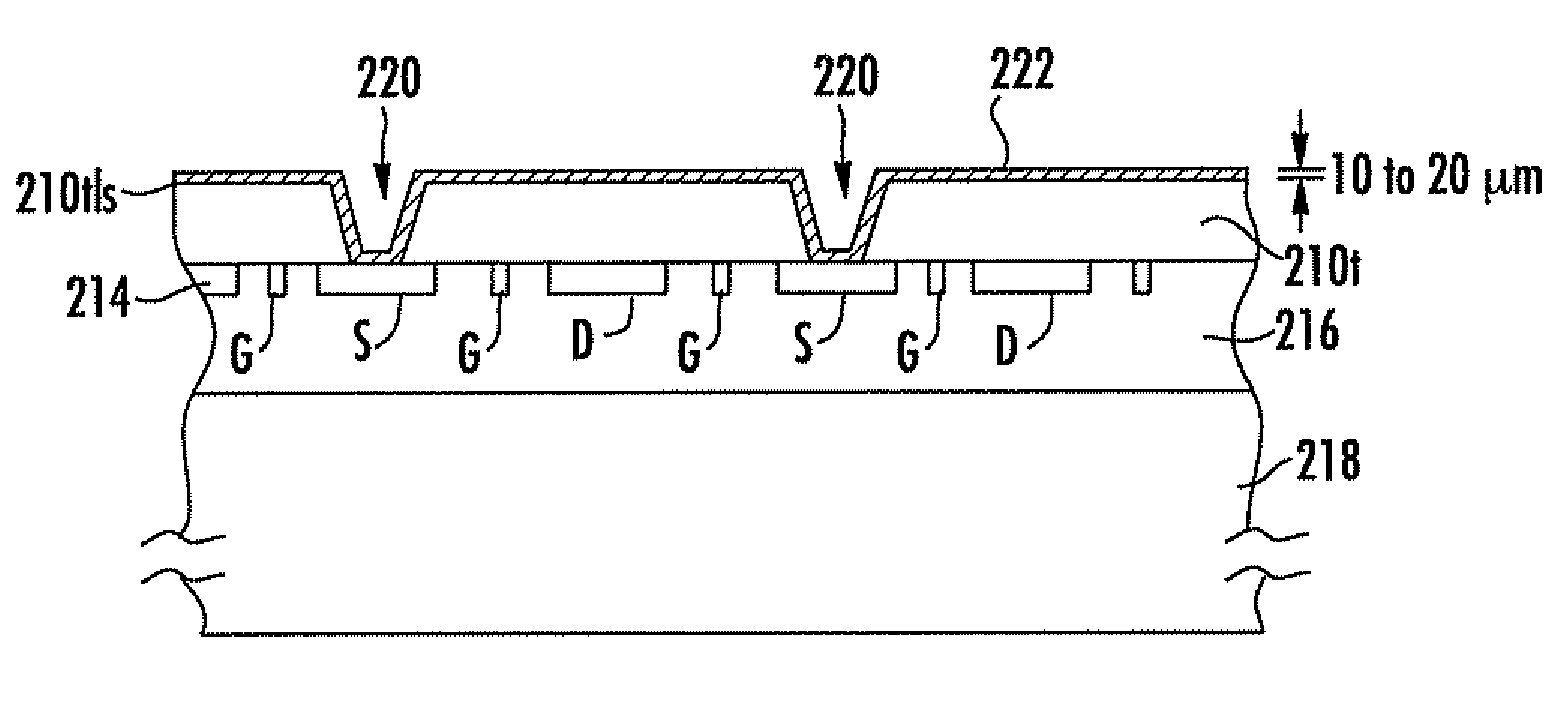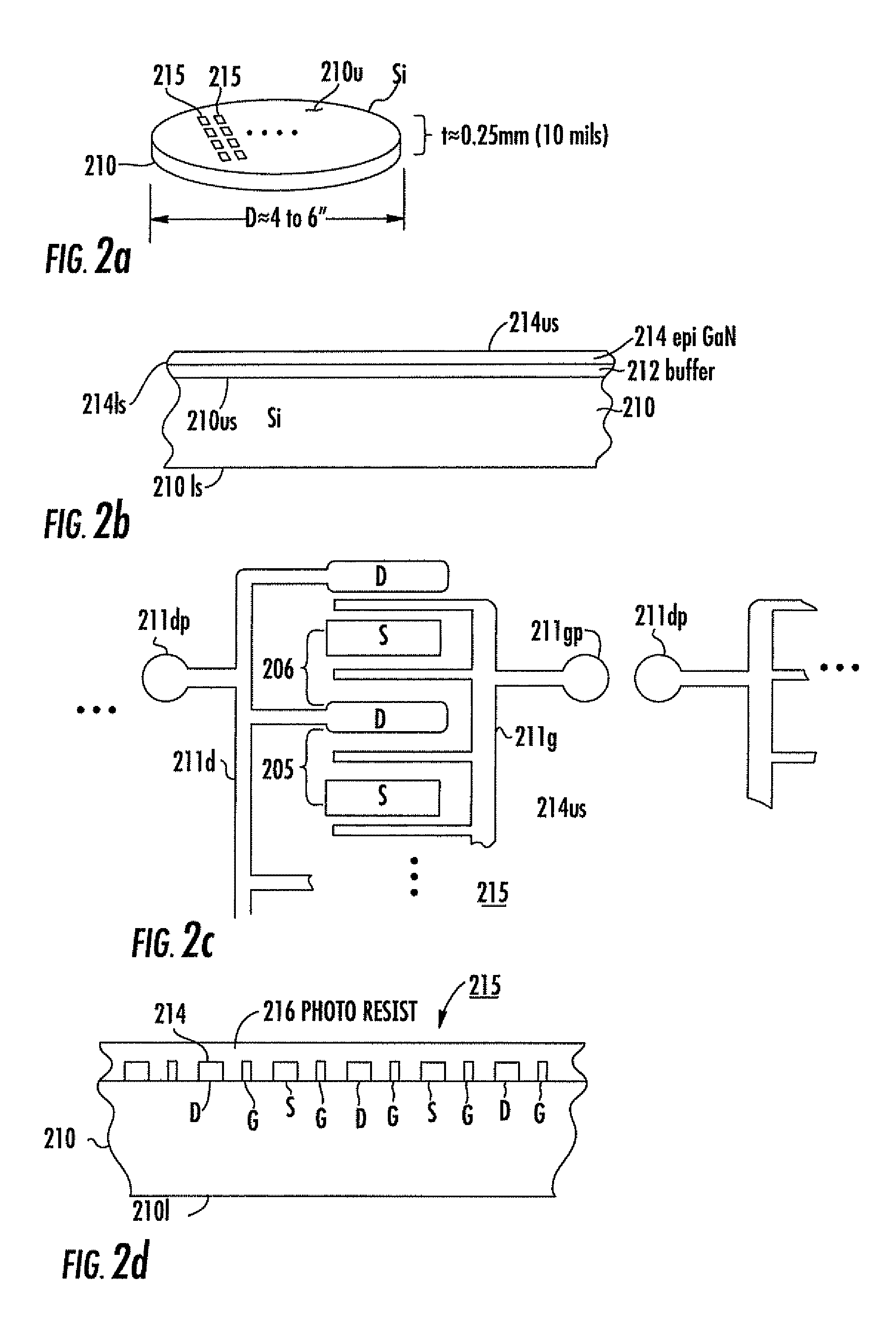Hybrid microwave integrated circuit
a hybrid microwave and integrated circuit technology, applied in the field of semiconductor amplifiers, can solve the problems of low power capability, unreliable and unreliable first semiconductor amplifiers, and devices tended to be leaky, and achieve the effect of less power capability
- Summary
- Abstract
- Description
- Claims
- Application Information
AI Technical Summary
Benefits of technology
Problems solved by technology
Method used
Image
Examples
Embodiment Construction
[0025]The invention is based in part upon the understanding that a radio-frequency semiconductor amplifier has high capacitive impedance at its common-source input and output ports, and that the amount of power which can be produced into a nominal 50-ohm or 75-ohm load can be optimized over a given bandwidth by the use of input andor output matching filters or matching circuits. These filters are necessary for optimum performance, but need not be placed on the same semiconductor material as the transistor. The invention is also based in part upon an understanding that ideal microwave integrated circuit amplifier structures may not be achievable, or immediately achievable, and that compromises may be required to achieve the goal of high reliability, high power microwave integrated circuits.
[0026]GaN on Si substrates have demonstrated the potential to achieve power densities of 5 to 10 w / mm and higher with a MTBF of 1E6 hours. Silicon substrates are relatively desirable from a cost vi...
PUM
 Login to View More
Login to View More Abstract
Description
Claims
Application Information
 Login to View More
Login to View More - R&D
- Intellectual Property
- Life Sciences
- Materials
- Tech Scout
- Unparalleled Data Quality
- Higher Quality Content
- 60% Fewer Hallucinations
Browse by: Latest US Patents, China's latest patents, Technical Efficacy Thesaurus, Application Domain, Technology Topic, Popular Technical Reports.
© 2025 PatSnap. All rights reserved.Legal|Privacy policy|Modern Slavery Act Transparency Statement|Sitemap|About US| Contact US: help@patsnap.com



